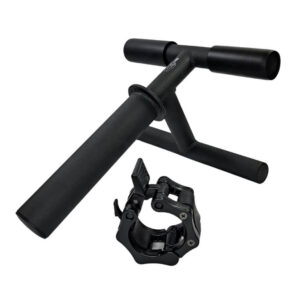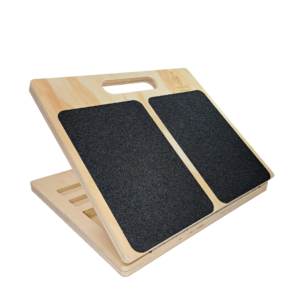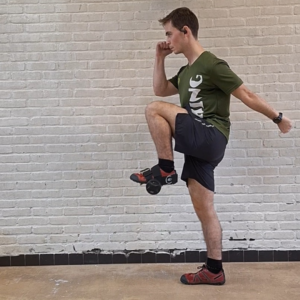
Stemming from the famous Pareto principle, the 80/20 running approach became a go-to for runners all around the world. At its core, this running method teaches is simple – 80% of your running time should be low intensity, while 20% should be high-intensity running.
Even our ancient ancestors used a form of this method in hunting – a long slow-paced track, followed by bursts of energetic sprinting to finish the hunt.
But, what does that really mean and how do we determine this intensity?
Let’s talk about it!
Table of Contents

WHY DOES RUNNING GET DIFFICULT – THE LACTATE THRESHOLD
When you run at a low intensity, your heart is capable of providing enough oxygen to your muscle cells. At this rate, your body can remove lactate acid efficiently. This means that you can freely talk in full sentences during the run – this is your aerobic running. We should call this the 80-part of the 80/20 running concept.
However, once you pick up the pace, your heart starts to lag behind and the lactic acid begins accumulating in your blood.
The point at which the body’s production of lactic acid exceeds its ability to remove it from the bloodstream is called the lactate threshold. It represents moving from aerobic to anaerobic training. This is where the 20-part of 80/20 begins – we may also call it high-intensity running.
Knowing where this lactate threshold is is the name of the game.
By running just below it, in the low-intensity zone, your body will adapt and to it and raise it. This directly translates to better results, as you spend more time in the desirable aerobic zone while traveling faster.
HOW TO MEASURE INTENSITY IN 80/20 RUNNING?
In short, there are three major ways to measure running intensity:
- Rate of perceived exertion, aka subjective feeling, aka perceived effort
- Heart rate measuring
- Pace measuring – most important for competitive runners
PERCEIVED EFFORT
At its core, the adapted Borg Scale of Perceived Exertion is a 1-10 subjective scale of how intense your running session is. It’s important we mention that this method can be tricky if you’re a beginner since you can’t know where your limits are.
Use this table as a guide:

So, when it comes to 80/20 running and perceived effort, you should keep it below 5 in the 80-part.
Of course, the downside of this is that you need to master quantifying your effort- which comes with experience.
HEART RATE
You can measure the lactate threshold by starting your run at rating 1 of the Perceived Exertion and then increasing your effort point by point until you give it a rating of 6. Mark down your HR at this point – this is your approximate lactate threshold (in beats per minute).
Once you have your approximate lactate threshold in beats per minute, you can calculate your heart rate intensity zones. This famous system was set up by Matt Fitzerald and is being used by a large number of runners:

The Talk Test
For example, you go out for a run starting at a slow speed and you gradually increase the pace until you feel like you are not holding back but also not pushing yourself.
Count out loud 120,121,122,123,124,125
If this feels ok, increase the speed once more and count 120,121,122,123,124,125. Repeat this until talking is slightly uncomfortable and you find yourself catching your breath. Look at your watch and mark down the heart rate. This is your approximate lactate threshold.
In this example let’s say it is 170bpm. The zones would look like this:
- Zone 1 – 75-80% of lactate threshold (0.75 * 170bpm = 128bpm; 0.8 * 170bpm = 136bpm)
- Zone 2 – 81-90% of lactate threshold (0.81 * 170bpm = 137bpm; 0.9 * 170bpm = 153bpm)
- Zone 3 – 95-100% of lactate threshold (0.95 * 170bpm = 162bpm; 1.0 * 170bpm = 170bpm)
- Zone 4 – 102-105% of lactate threshold (1.02 * 170bpm = 173bpm; 1.05 * 170bpm = 179)
- Zone 5 – 106%+ of lactate threshold (1.06 * 170bpm = 180+bpm)
So, you should keep 80% of your running time in zones 1 and 2, while you do your 20% of high-intensity running in zones 4 and 5.
PACE
Lastly, we have pace as a measure of running intensity output. It’s especially important for competitive runners, as it determines how fast you finish the track, aka your final time.
And now that you have your lactate threshold figured out through 5 HR zones, you can create your 5 pace zones. These should align with each other, as they represent the same lactate threshold, only from a different perspective. Here’s how to do it:
- Begin by jogging very slowly for 5 minutes, then gradually increase your effort until your heart rate settles into a steady rhythm at the top of your HR zone 1 Note your pace at this point.
- Next, increase your effort very slightly until your heart rate is at the bottom of your zone 2 range, and mark your pace again.
- Continue in this fashion until your heart rate reaches the bottom end of your zone 5 range and note the corresponding pace one last time.
You now have a full set of pace zones to complement your heart rate zones. It is worth noting that at high intensities, heart rate monitoring is less useful because of cardiac lag, making pace the preferred way to measure intensity.
80/20 RUNNING TIPS FOR BEGINNERS
Before you go test your lactate threshold, here are a few tips on how to approach this whole ordeal:
- Take measurements on a good day for running
- Use a benchmark route and recheck your intensity zones every once in a while
- Do these measurements on a flat route. Uphill/downhill can be tricky when measuring HR zones
CONCLUSION
The 80/20 running principle might look at first like it’s limiting your potential. But, by limiting your high-intensity running to 20% (a 5th of your run time), you allow your body to raise the lactate threshold.
On top of everything, by limiting the high stress on your body, you get to recover faster. And fewer injuries = more time running! In total, 80/20 running allows you to create a perfect balance between running volume, intensity, and hypertrophy.
Check out our Knees Over Toes Guide to learn more about lower-body bulletproofing.







